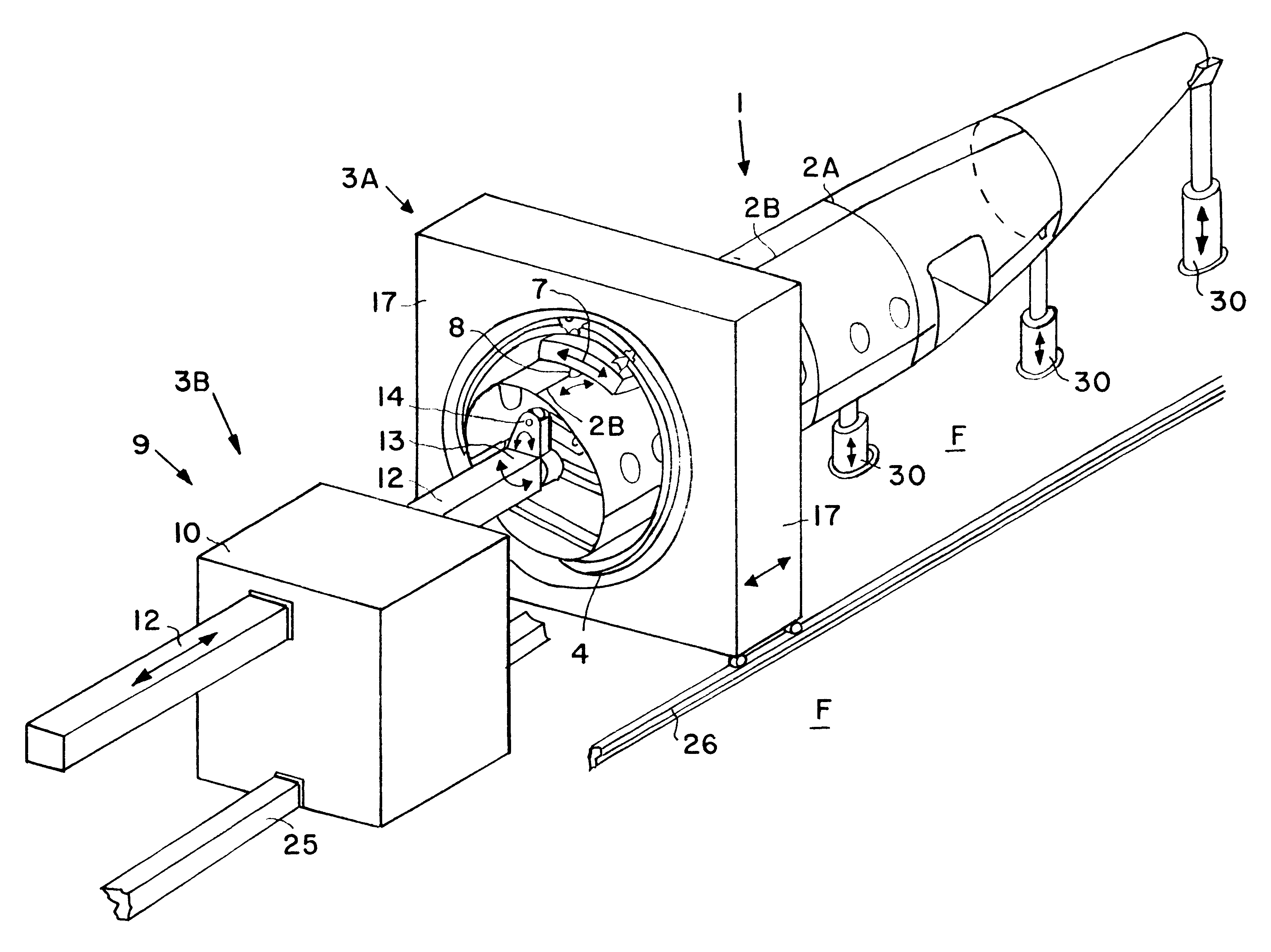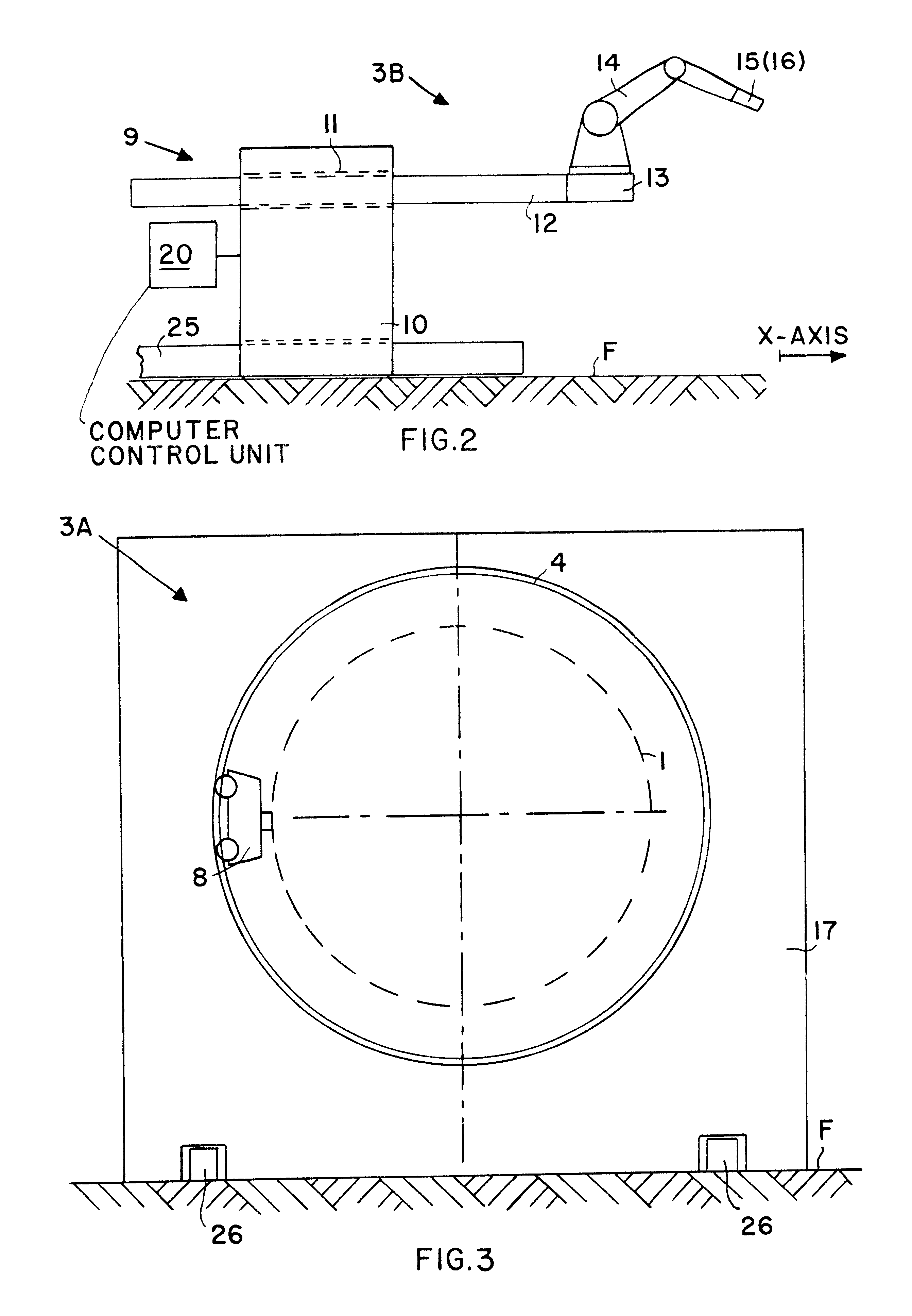Two-part riveting apparatus and method for riveting barrel-shaped components such as aircraft fuselage components
a barrel-shaped component and aircraft fuselage technology, which is applied in metal working apparatus, metal-working machine components, manufacturing tools, etc., can solve the problems of difficult and complicated or even impossible to properly arrange the respective machine guide arrangements for forming rivets at particular individual rivet locations, and can only be used in a limited field of applications
- Summary
- Abstract
- Description
- Claims
- Application Information
AI Technical Summary
Benefits of technology
Problems solved by technology
Method used
Image
Examples
Embodiment Construction
FIG. 1 shows two aircraft fuselage sections 1A and 1B as respective parts of an aircraft fuselage 1. The two fuselage sections 1A and 1B are to be joined to each other typically along a transverse or circumferential seam or joint 2A, where the joining is carried out by a great number of rivets respectively secured in corresponding rivet holes. Any known type of rivet or rivet-like fastener can be fastened along the seam using the inventive apparatus as will now be described. Also, instead of the riveting device forming a riveted joint, the present apparatus could include any other type of joining device such as a welding device or an adhesive bonding device to form respective different types of joints. The present preferred embodiment described herein uses a riveting device to form riveted joints. An automatic riveting apparatus is advantageously used for fabricating the riveted joints during the assembly of the aircraft fuselage 1, because only an automatic method and apparatus for...
PUM
| Property | Measurement | Unit |
|---|---|---|
| surface area | aaaaa | aaaaa |
| perimeter | aaaaa | aaaaa |
| area | aaaaa | aaaaa |
Abstract
Description
Claims
Application Information
 Login to View More
Login to View More - R&D
- Intellectual Property
- Life Sciences
- Materials
- Tech Scout
- Unparalleled Data Quality
- Higher Quality Content
- 60% Fewer Hallucinations
Browse by: Latest US Patents, China's latest patents, Technical Efficacy Thesaurus, Application Domain, Technology Topic, Popular Technical Reports.
© 2025 PatSnap. All rights reserved.Legal|Privacy policy|Modern Slavery Act Transparency Statement|Sitemap|About US| Contact US: help@patsnap.com



